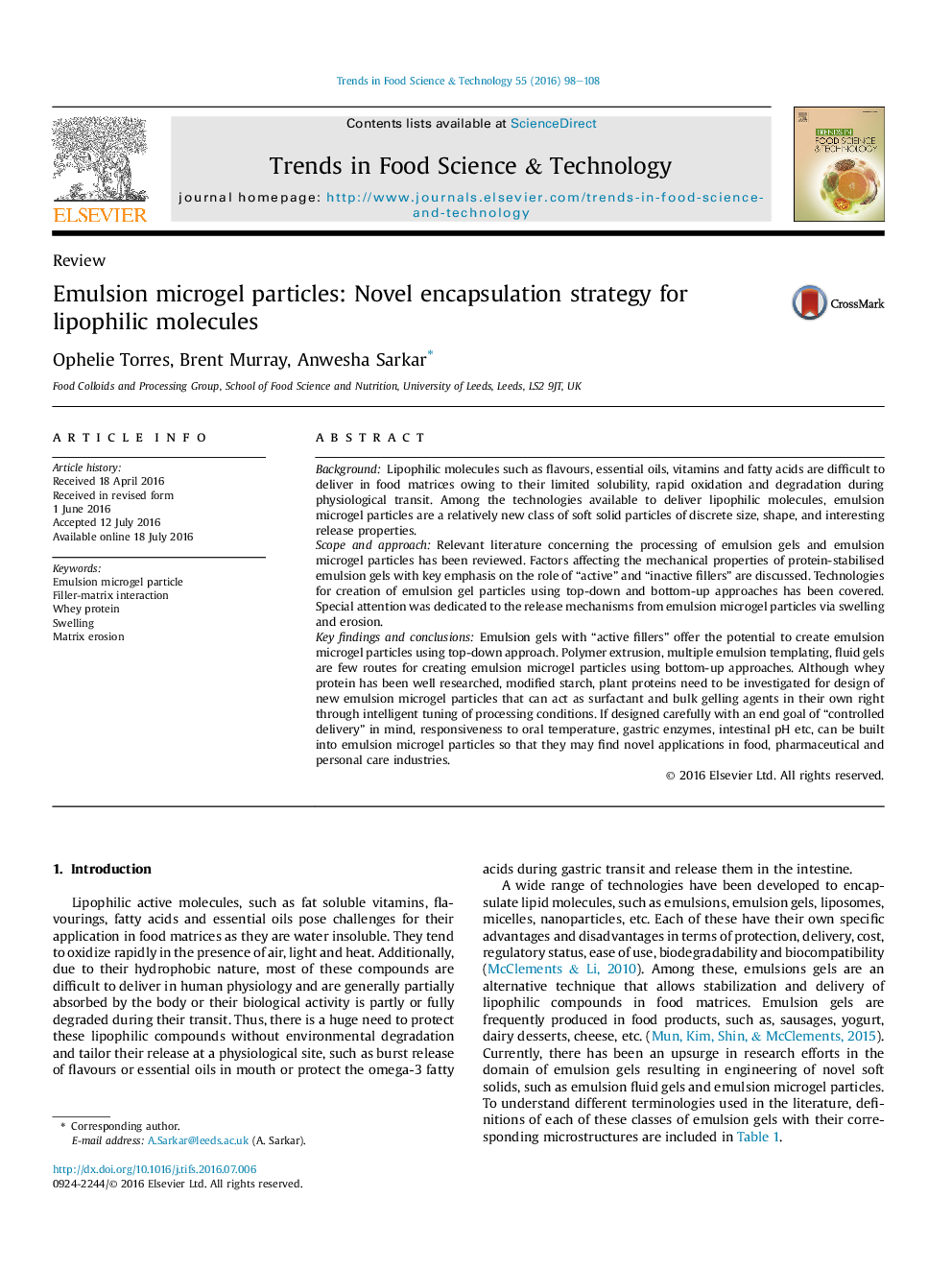| کد مقاله | کد نشریه | سال انتشار | مقاله انگلیسی | نسخه تمام متن |
|---|---|---|---|---|
| 2098482 | 1546123 | 2016 | 11 صفحه PDF | دانلود رایگان |
• Emulsion microgel particles are a new class of soft solid with discrete sizes.
• They are formed by controlled shear, polymer extrusion, multiple emulsion template.
• Filler-matrix interaction can determine the mechanical behaviour of emulsion gel.
• Emulsion microgel particles may be useful for encapsulation of lipophilic molecules.
• Such particles offer potential for controlled release by swelling or matrix erosion.
BackgroundLipophilic molecules such as flavours, essential oils, vitamins and fatty acids are difficult to deliver in food matrices owing to their limited solubility, rapid oxidation and degradation during physiological transit. Among the technologies available to deliver lipophilic molecules, emulsion microgel particles are a relatively new class of soft solid particles of discrete size, shape, and interesting release properties.Scope and approachRelevant literature concerning the processing of emulsion gels and emulsion microgel particles has been reviewed. Factors affecting the mechanical properties of protein-stabilised emulsion gels with key emphasis on the role of “active” and “inactive fillers” are discussed. Technologies for creation of emulsion gel particles using top-down and bottom-up approaches has been covered. Special attention was dedicated to the release mechanisms from emulsion microgel particles via swelling and erosion.Key findings and conclusionsEmulsion gels with “active fillers” offer the potential to create emulsion microgel particles using top-down approach. Polymer extrusion, multiple emulsion templating, fluid gels are few routes for creating emulsion microgel particles using bottom-up approaches. Although whey protein has been well researched, modified starch, plant proteins need to be investigated for design of new emulsion microgel particles that can act as surfactant and bulk gelling agents in their own right through intelligent tuning of processing conditions. If designed carefully with an end goal of “controlled delivery” in mind, responsiveness to oral temperature, gastric enzymes, intestinal pH etc, can be built into emulsion microgel particles so that they may find novel applications in food, pharmaceutical and personal care industries.
Journal: Trends in Food Science & Technology - Volume 55, September 2016, Pages 98–108
